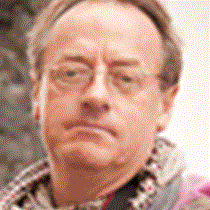Kirkwall, Mainland, Orkney, Scotland
We left the ship early this morning to explore the richly textured and patterned landscape that Mainland Orkney is renowned for. This is a multi layered cultural fabric. Each successive wave of settlers has left their own distinctive signature on this island. Indeed the quality of its archaeological remains has earned it a place on the UNESCO World Heritage Site list. We visited a number of very special places including the Ring of Brodgar and Skara Brae. The former is an ancient stone circle constructed around 4,500 years ago. Of an original 60 large standing stones only 27 are still extant. Surrounded by a deep ditch and occupying an elevated platform of land this structure presumably had an important ceremonial or ritual significance to the Bronze Age people who built it.
But it is the Neolithic stone built village of Skara Brae that is the real archaeological gem of Orkney. Discovered in 1850 following a severe storm, which removed the top of a local sand dune, the site yielded intimate details of everyday life far back in the prehistoric past. Six thousand years ago Orkney was more or less treeless. However the local flagstones were ideal as a building material and so the early agriculturalists constructed their entire village complex from them. Each house was a private, individual dwelling reached via a subterranean passageway. Inside the furniture and other features were all made from stone. Perhaps the most evocative of these are the ‘dressers’ which were all positioned directly opposite the entrance in each of the houses. The prize possessions of the home owners may have been displayed on them. Likewise in cottages on the island up to recent times the woman of the household arranged her best crockery and ornaments on a wooden dresser positioned on the wall opposite the entrance. This was perhaps a continuation of a tradition first introduced by the island’s prehistoric Stone Age farmers. These Neolithic forebears were responsible for the introduction and adoption of a sedentary lifestyle based on cultivation of food plants and the rearing of domestic animals. The modern managed and manicured landscape with its herds of grazing cattle in fields bounded by dry stone walling are all legacies of these pioneering farming communities who arrived on these shores in the fourth millennium BC.
The afternoon was well spent visiting the World War II Period ‘Italian Church’ outside Kirkwall. This was built by Italian POWs who were involved in the construction of ‘Churchills Barriers,’ a defensive system designed to impede penetration of the safe anchorage of Scapa Flow by enemy U-boats. Using materials scrounged from the camp they constructed a place of worship that is both ingeniously and sensitively designed. The Fossil and Heritage Centre at Burray houses a very impressive collection of locally found paleontological specimens and displays detailing times past on Orkney. A natural history hike was well rewarded with sightings of a wide variety of seabirds and flowering plants. A locally based traditional group, Hullion, charmed and entertained us with their effervescent style and consummate musical skills.




